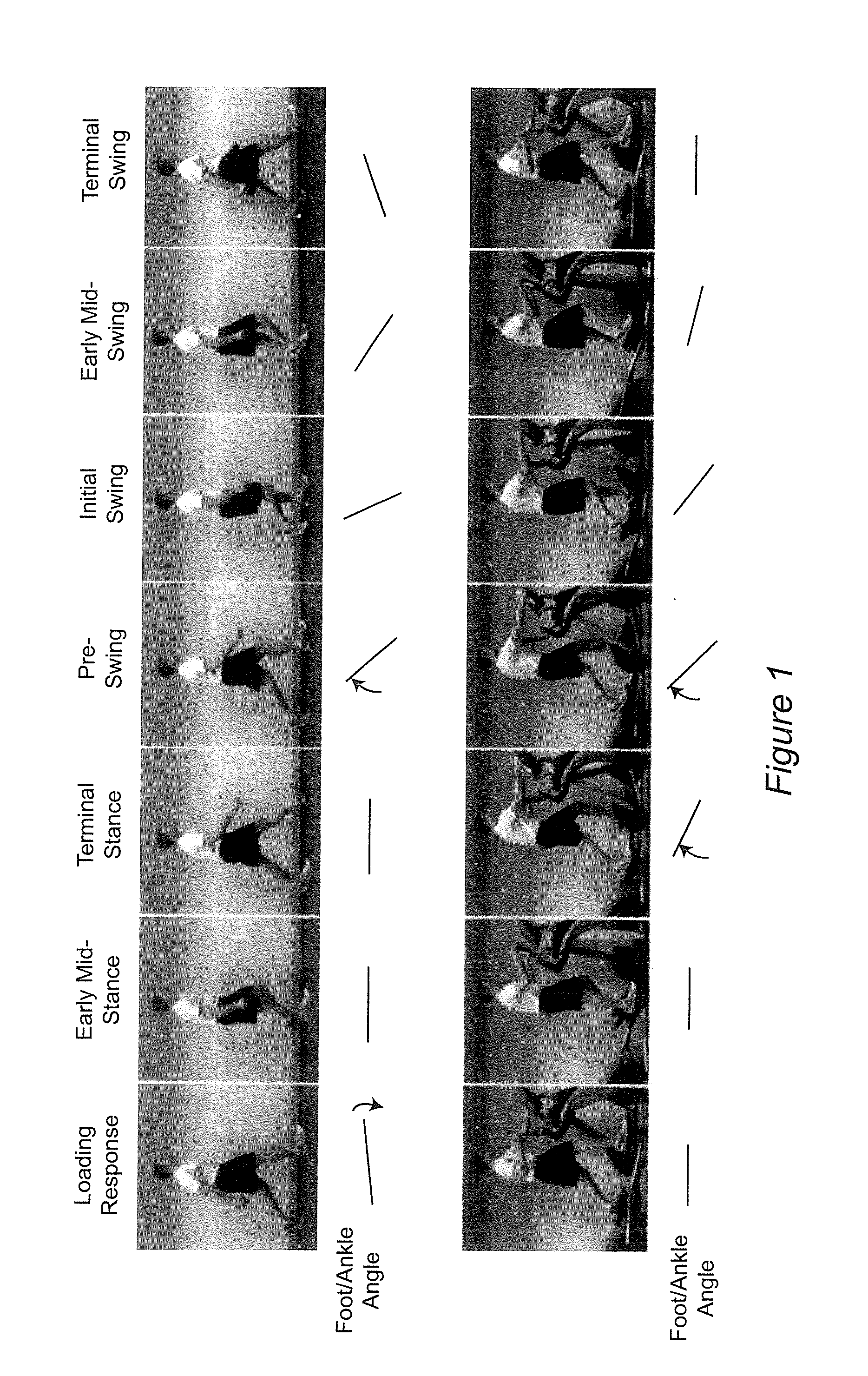Spasticity reducing closed-loop force-feedback control for post-stroke gait training
a closed-loop force-feedback and post-stroke technology, applied in the field of exercise apparatus and physical therapy machines, can solve the problems of affecting the recovery of people who survive stroke, affecting the recovery of people who have severe and persistent disabilities, and leaving a more or less intractable degree of impairment of some capabilities, etc., to achieve the effect of restoring muscle tone and coordination
- Summary
- Abstract
- Description
- Claims
- Application Information
AI Technical Summary
Benefits of technology
Problems solved by technology
Method used
Image
Examples
Embodiment Construction
[0024]Referring now to the drawings, and more particularly to FIG. 1, there is shown two sequences of photographs of the same subject performing a sequence of motions representing one cycle of a walking gait. (as a matter of terminology, the term “gait cycle” refers to a complete motion involving both feet and legs that is repeated in its entirety during walking while the term “step” refers to either the loading and stance phase or the swing phase fo a gait cycle as illustrated in FIG. 1 and thus is approximately one-half of a gait cycle in duration. The term “stride” generally refers to the nature or length of a step or gait cycle and thus may be somewhat ambiguous in regard to various aspects of the invention and will not be used in the following discussion of the invention.) While the invention is not depicted in the photographic sequences of FIG. 1, the photographs and the sequences are selected and arranged and indicia applied thereto to facilitate an understanding of the probl...
PUM
 Login to View More
Login to View More Abstract
Description
Claims
Application Information
 Login to View More
Login to View More - R&D
- Intellectual Property
- Life Sciences
- Materials
- Tech Scout
- Unparalleled Data Quality
- Higher Quality Content
- 60% Fewer Hallucinations
Browse by: Latest US Patents, China's latest patents, Technical Efficacy Thesaurus, Application Domain, Technology Topic, Popular Technical Reports.
© 2025 PatSnap. All rights reserved.Legal|Privacy policy|Modern Slavery Act Transparency Statement|Sitemap|About US| Contact US: help@patsnap.com



